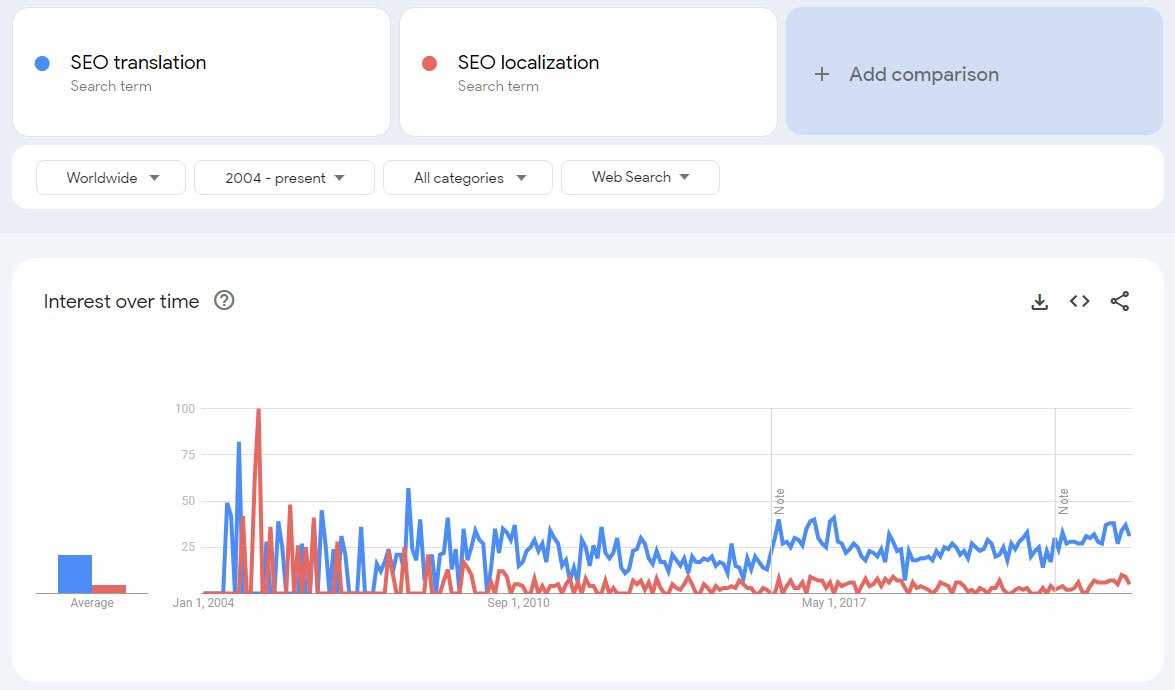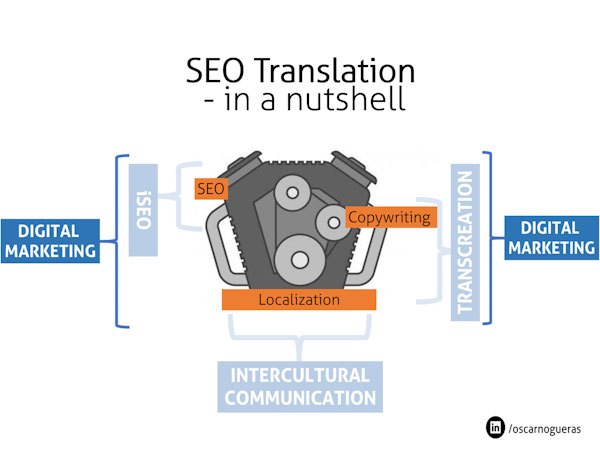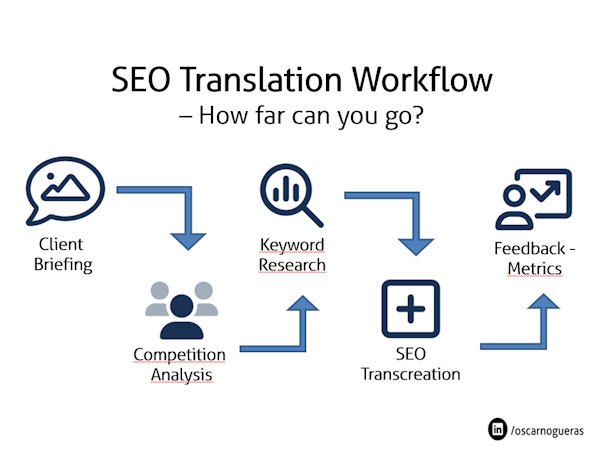In the dynamic digital age, the confluence of translation and digital marketing has given rise to the specialized field of SEO translation. While not a novel concept, this linguistic service has gained significant traction in recent times, presenting a promising avenue for LSPs eager to navigate through a blue ocean of untapped potential. But what exactly is SEO translation, and why is it imperative for our service portfolio? How can LSPs effectively venture into this domain?
The Allure of the Blue Ocean
In the seminal work, “The Blue Ocean Strategy,” W. Chan Kim and Renée Mauborgne advocate for businesses to transcend overcrowded markets (red oceans) and carve out unique market spaces (blue oceans). Transposing this philosophy to today’s language services arena, we observe that services like translation, interpreting, proofreading, and even postediting are ensnared in the red ocean where LSPs often vie for dominance by offering similar services at competitively low rates.

Yet, with the digital revolution and evolving marketing paradigms, pioneering LSPs are gravitating towards more niche services like copywriting, transcreation, and SEO translation. This strategic shift allows them to sidestep price wars and cultivate their distinct blue ocean.
Notably, while SEO translation has recently garnered attention, its roots trace back to 2004, making it a domain with over two decades of history. But what constitutes SEO translation nowadays?
Decoding SEO Translation
At its core, SEO translation melds localization, copywriting, and international SEO to tailor digital content, ensuring it resonates with target audiences by aligning with their language, cultural nuances, and expectations.
The ultimate goal? To attract new users, foster brand affinity, and spur them into action—be it purchasing a product, downloading resources, or subscribing to services. However, it’s a disservice to oversimplify SEO translation as mere keyword research or meta tag translation. Such a reductionist view overlooks its multifaceted nature.

A profound understanding of digital marketing underpins successful SEO translations. Foundational concepts like inbound marketing, sales funnels, and user search behaviors based on their funnel position are indispensable. Consequently, SEO translation rests on three pillars:
1. Localization and Intercultural Communication
Recognizing and bridging cultural disparities is paramount. As digital marketing translation maestros, our expertise should encompass both source and target cultural nuances. Delving into intercultural communication studies, such as pioneering G. Hofstede, Erin Meyer or Nathalie Nahai can offer invaluable perspectives.
2. Transcreation
Digital content cannot be translated verbatim without risking loss of intent. Hence, transcreation—a mix of localization and copywriting that adapts content to the target culture while preserving the client’s objectives—is often the preferred approach. A comprehensive briefing is the linchpin for successful transcreation.
3. International SEO
A grasp of multilingual SEO is crucial. This encompasses on-page SEO elements like hreflang, SERPs, and market-specific keyword research. It’s pivotal to discern user search patterns to refine our translations.
Embarking on the SEO Translation Voyage: Tips for LSPs
As LSPs set sail on the journey of SEO translation, there are several strategic considerations to keep in mind.
Firstly, joining LSP associations can be immensely beneficial, allowing businesses to tap into industry synergies. Training sessions and webinars are extremely valuable to keep our teams in the loop.
Networking plays a pivotal role in this voyage. By establishing strong connections with digital marketing experts, LSPs can open doors to collaborative opportunities and potential project referrals.
The digital marketing landscape is in a constant state of flux, making continuous learning an absolute necessity. LSPs should actively follow and engage with local SEO experts to stay informed about the ever-evolving algorithms and best practices.
Moreover, it’s essential for LSPs to lead by example. An optimized website not only showcases an LSP’s expertise but also builds trust with potential clients. After all, if an LSP cannot optimize its own website, how can it promise to deliver optimized translations for others?
Lastly, vigilance is key. This industry is rife with individuals making grandiose promises. LSPs should exercise caution and prioritize partnerships with genuine, experienced SEO translation experts over those who offer quick fixes or make unrealistic claims. I assure you that your website will rank in the top 3 kind of statement, should discourage you big time.
Meeting Client Expectations
Understanding and catering to client expectations is at the heart of delivering effective SEO translation services. Depending on the type of client, the SEO translation workflow may require all or some specific steps.

When working with end clients, it’s crucial to delve deep into their specific needs. This involves gaining a comprehensive understanding of their goals, products, or services. Additionally, conducting a thorough competitive analysis and keyword research can provide insights into the market landscape, enabling the creation of tailored, SEO-friendly content. Building and maintaining a strong rapport is also essential, with reviews of metrics after 3-6 months to ensure success and to fortify your relationship with your client.
Collaborations with digital marketing agencies often come with their own set of dynamics. These agencies typically come equipped with detailed briefs, competition analyses, and even professional keyword research in some target languages. In such partnerships, the primary role of the LSP is to produce an SEO transcreation that is optimized for both the target audience and search engines, ensuring a seamless and efficient collaboration process.
Teaming up with fellow Language Service Providers (LSPs) presents a unique set of challenges and opportunities. As the trend of LSPs collaborating on SEO translation services, they might not be intimately familiar with grows, clear communication becomes paramount. Especially when not in direct contact with end clients, it’s vital to set clear expectations with the partnered LSP to ensure alignment and successful project outcomes.
Charting the Blue Ocean Path
In today’s saturated language services market, LSPs face the challenge of differentiating themselves from the competition. The solution lies in the realm of SEO translation—a fusion of transcreation and digital marketing strategies.
By pioneering in this niche, LSPs can transcend the typical price-driven competition, offering unparalleled value through tailored, culturally resonant, and search-optimized content. This approach not only positions LSPs as industry innovators but also paves the way for sustainable growth.
As the digital landscape continues to evolve, the opportunity to chart a unique course in the vast blue ocean of SEO translation awaits those ready to embark on it.

 Oscar Nogueras is the founder and CEO of
Oscar Nogueras is the founder and CEO of